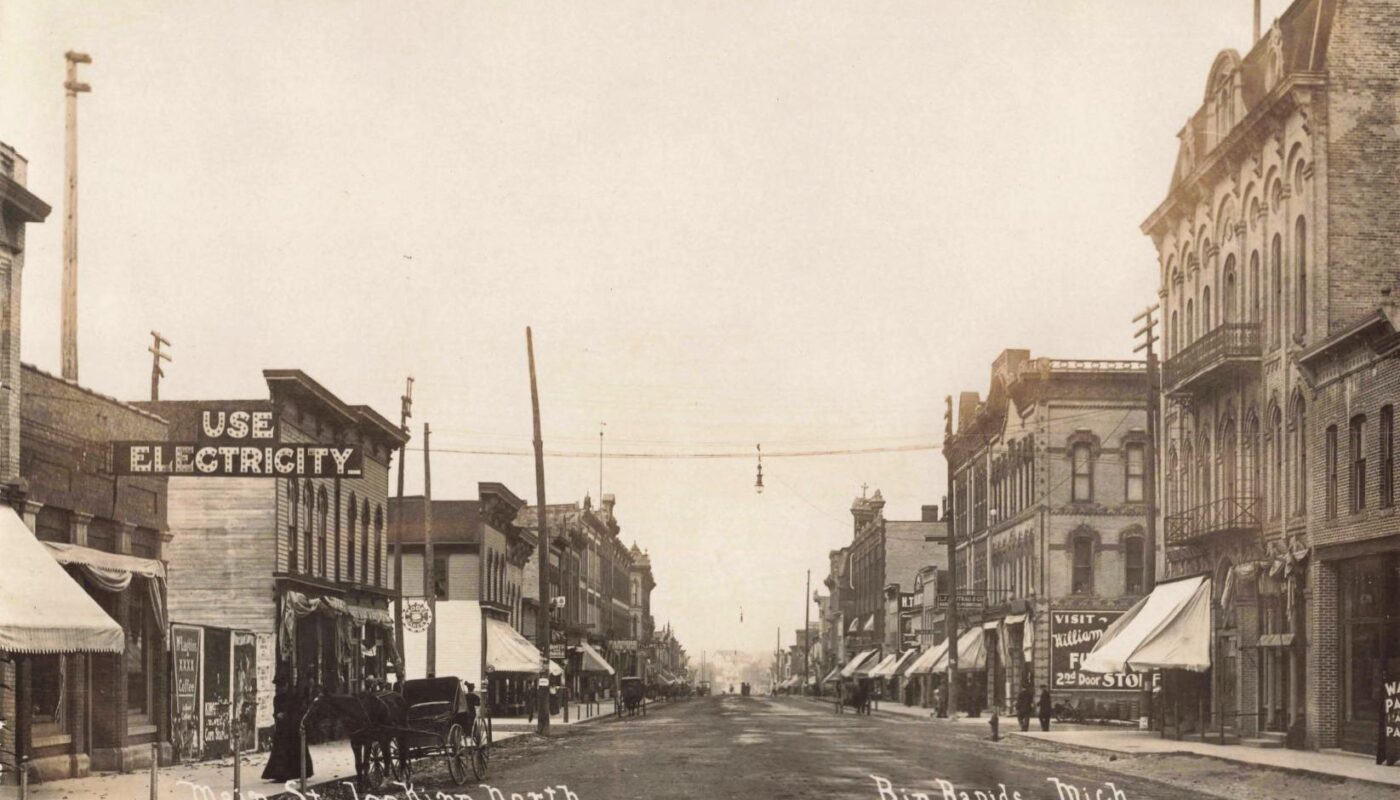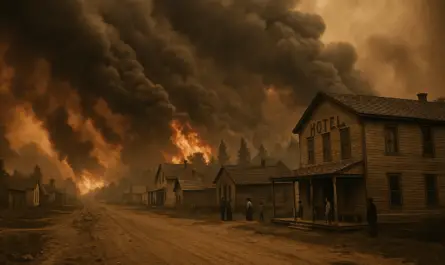The history of Big Rapids, Michigan, is a tale of transformation. This small city in west-central Michigan began as a booming lumber town in the 1880s and evolved into a thriving college community by the mid-20th century. Big Rapids’ journey from a timber boom town to an educational hub offers a fascinating glimpse into how a town can reinvent itself. In this article, we’ll explore the key chapters in the history of Big Rapids Michigan – from the roaring lumber era, through industrial changes and cultural growth, to the pivotal influence of Ferris Institute.
Lumber Boomtown on the Muskegon River (1880s)
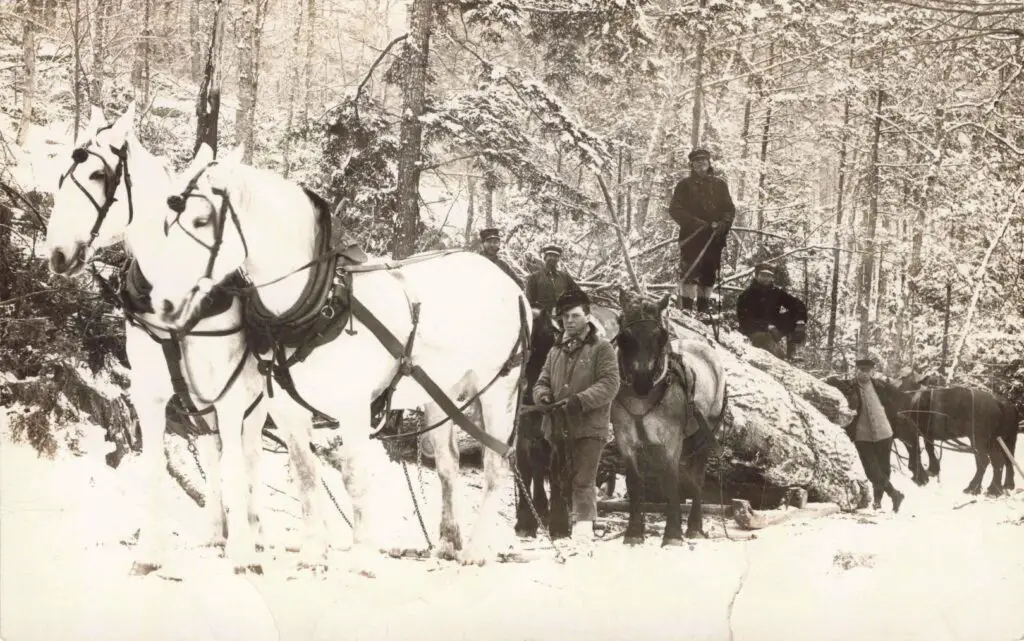
Big Rapids was founded in the mid-19th century and by the 1880s had grown into a classic Michigan lumber boomtown. Its location on the Muskegon River was strategic – the river’s “big rapids” helped drive logs downstream and provided power for the saw. Enormous white pine forests surrounded the town, and timber was king. Lumber companies set up sawmills along the river, and each winter, loggers felled thousands of trees in the north woods.
Come spring thaw, the logs were floated downriver in great flotillas, destined for sawmills in Big Rapids and beyond. The population swelled with lumberjacks, mill workers, and entrepreneurs hoping to profit from the forest’s riches. In 1880, Big Rapids had several thousand residents and more arriving every day.
Main Street in the 1880s reflected the rough-and-tumble nature of a lumber town. Photographs from that era show dusty unpaved streets lined with wooden storefronts, horses, and wagons hitched out front. Saloons, boarding houses, and general stores did brisk business serving the transient logging crews. The air often smelled of fresh-cut pine and sawdust. It was a time of optimism and hard work – but also one of looming change. By the late 1880s and into the 1890s, the history of Big Rapids Michigan, underwent a significant shift as the great pine forests were gradually depleted by overlogging. Local leaders began to wonder what would happen to their town when the timber ran out.
The Founding of Ferris Institute (1884)
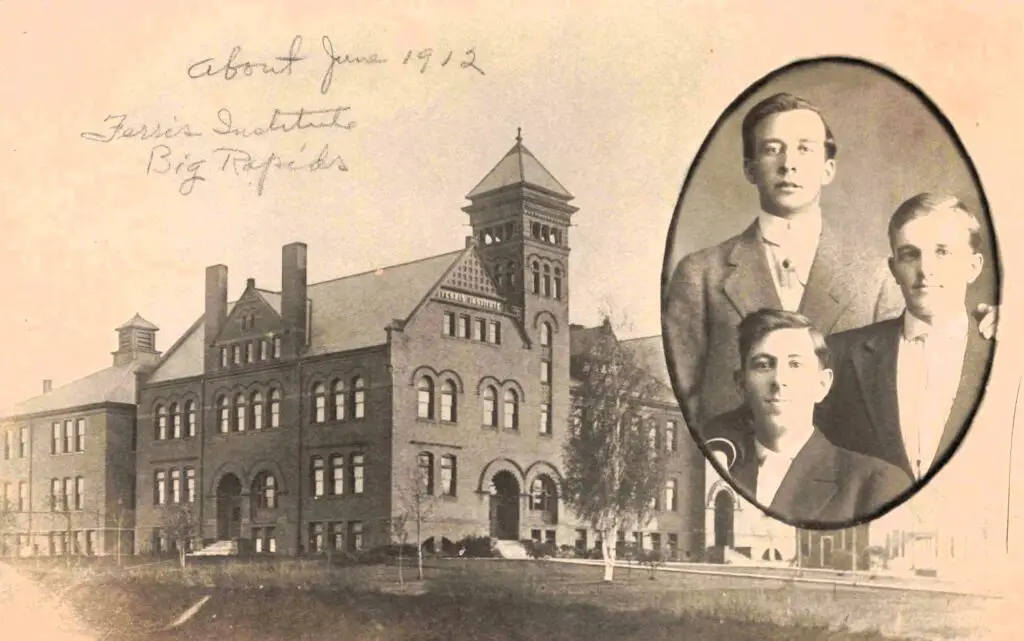
A crucial development in Big Rapids’ history came in 1884, right at the height of the lumber boom. A young educator named Woodbridge Nathan Ferris decided to establish a school in Big Rapids. Woodbridge Ferris believed that people needed practical, affordable education to improve their lives. In the fall of 1884, he and his wife, Helen, opened the Big Rapids Industrial School with just 15 students in a makeshift downtown space. Mr. Ferris taught classes in subjects like business arithmetic and penmanship, aiming to prepare students for real jobs. His timing turned out to be perfect. As logging jobs declined, many local young people sought new careers, and Ferris’s school offered a path forward.
The school grew quickly. In 1885, it was renamed the Ferris Industrial School, and by the early 1890s, enrollment had begun to boom. In 1894, the institution constructed its first dedicated building on a hilltop site – an impressive brick structure known as Old Main. That same year, the school was officially incorporated as the Ferris Institute, reflecting a broader mission. Ferris Institute offered courses beyond basic business skills. It became a pioneer in vocational and technical education, adding programs to train teachers, pharmacists, and skilled tradespeople.
Notably, the Ferris Institute provided opportunities for women as well as men, which was somewhat progressive for the time (the school was co-educational from the start). Woodbridge Ferris believed in “education for all, all of the time,” a motto he often repeated. This philosophy of inclusivity meant the school welcomed students from all backgrounds, including those who might not have been able to afford college elsewhere.
The Ferris Institute had a profound impact on the community. It created jobs for faculty and staff, attracted young students who rented rooms and purchased goods locally, and gave Big Rapids a new identity as an “education town.” Mr. Ferris himself became a prominent figure, being elected Governor of Michigan in 1912 and later serving as a U.S. Senator. Despite these commitments, he remained president of Ferris Institute until he died in 1928, ensuring the school stayed in Big Rapids and continued to thrive. Thanks to Ferris Institute, even as the lumber economy declined, Big Rapids avoided the fate of many one-industry towns and found a more sustainable path.
Economic Shifts in the Early 1900s
By the early 20th century, the white pine forests were largely depleted, and the era of massive log drives had ended. The history of Big Rapids Michigan, entered a new phase as the city sought to diversify its economy. One strategy was to capitalize on the region’s remaining hardwood timber. Local entrepreneurs opened mills to produce hardwood lumber, furniture, and veneer products. For example, Big Rapids became home to a flooring factory and even a broom handle factory in the 1910s and 1920s (using wood from second-growth forests).
The 1911 Encyclopædia Britannica noted that by 1910, the principal manufactures in Big Rapids included lumber and furniture, as well as specialized saw-filing machinery for sawmills. This indicates the city was pivoting from simply harvesting wood to processing wood into finished goods.
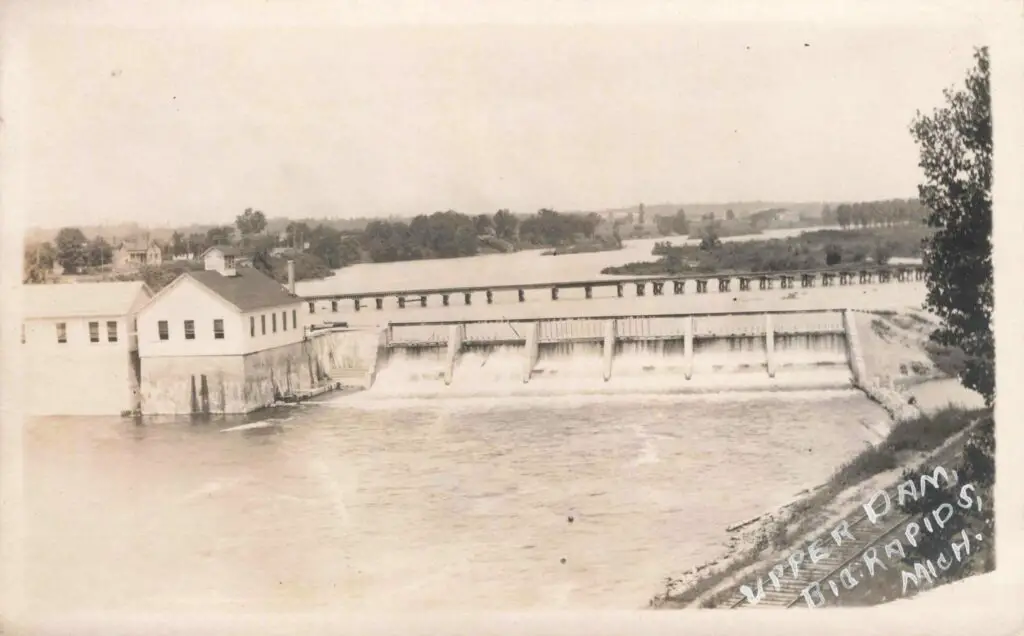
Another significant change was the advent of hydroelectric power. In 1906, a power company built a large hydroelectric dam a few miles south of Big Rapids on the Muskegon River (known as Rogers Dam). The dam harnessed the river’s flow to generate electricity, some of which was transmitted back into the city. For the first time, Big Rapids had reliable electric power. Streetlights replaced oil lamps, and businesses could operate electric machinery. An earlier, smaller “upper dam” within the city limits had generated local power around the turn of the century, but it was partially destroyed by flooding and ice in 1906.
The new hydro plants built in the 1900s ensured Big Rapids and the surrounding communities had modern electric service. The presence of electricity even inspired local boosters – a famous early photograph shows a sign downtown proclaiming “USE ELECTRICITY,” encouraging residents to embrace this new technology (and presumably to patronize the electric utility).
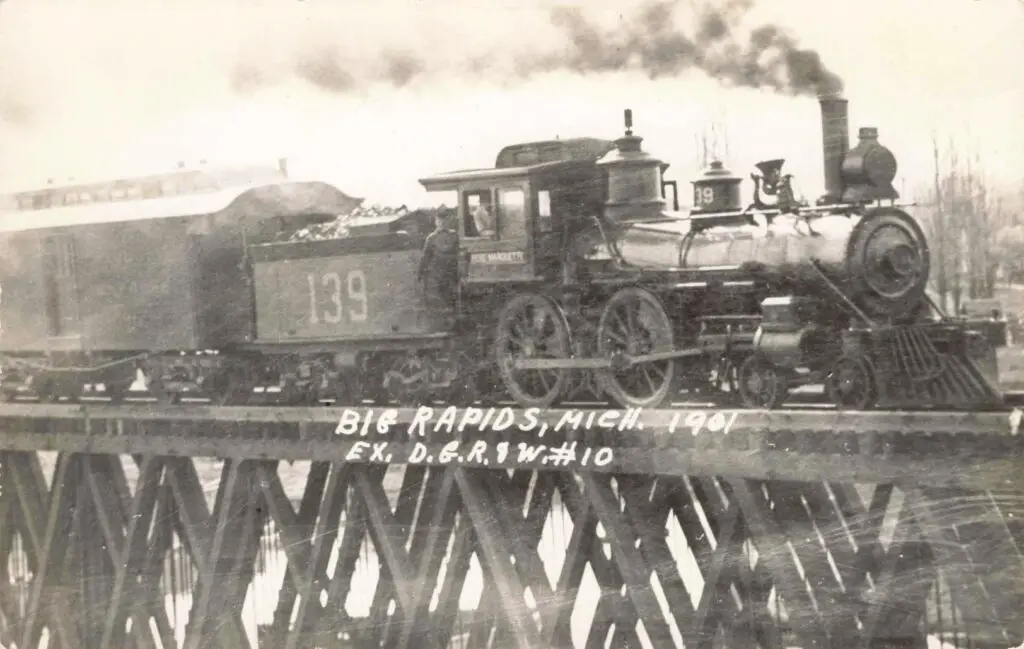
Big Rapids also kept up with transportation and governance trends. The city was served by two railroad lines – the Grand Rapids & Indiana Railroad (north-south) and the Pere Marquette Railway (east-west)– which helped industries ship products and brought visitors to town. In 1914, Big Rapids adopted a council-manager form of city government, becoming one of the first Michigan cities to do so. This progressive move involved hiring a professional city manager to oversee day-to-day operations, a system designed to reduce corruption and enhance efficiency. Big Rapids prided itself on being forward-thinking despite its small size. All these changes demonstrated that even after the lumber era, the city continued to actively shape its future.
Cultural Life and Community in the 1920s–1940s
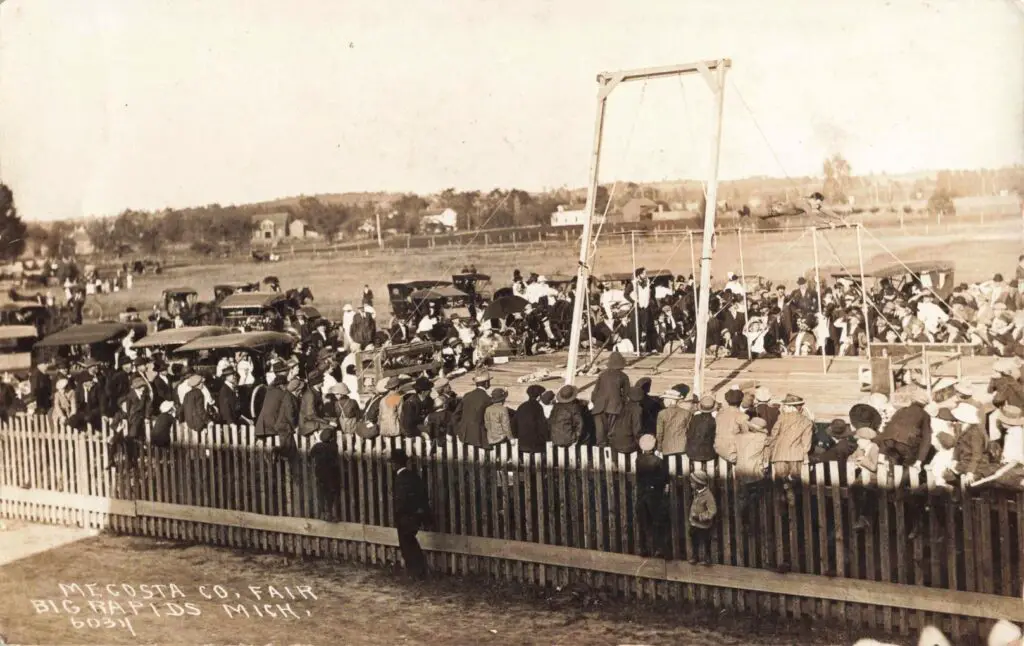
With the Ferris Institute anchoring the town’s identity, Big Rapids developed a rich community life between the two World Wars. One centerpiece was the Mecosta County Free Fair, held annually in Big Rapids. The fair had begun in 1886, and by the 1920s, it had become a significant annual event. The fairgrounds, situated along the river, featured agricultural exhibits, 4-H competitions, and thrilling harness races, as well as early motorcycle races on the dirt track.
Period photographs from the 1910s show huge crowds lined up along fences, watching intently as racers on primitive motorcycles kick up clouds of dust (and even some buggy racers and horse races in earlier years). The county fair was more than entertainment – it was a time for the whole region to come together, celebrate local farming, and enjoy a break from routine. It fostered a strong sense of community pride.
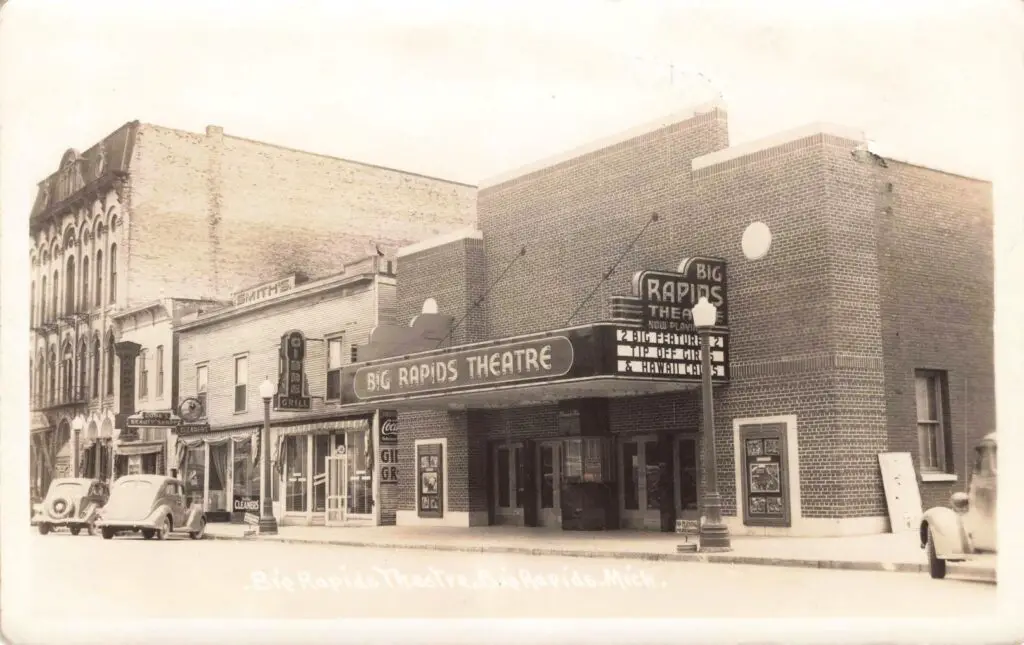
Entertainment options in town also grew. In the 1930s, downtown boasted the new Big Rapids Theatre, a brick cinema palace where residents could watch newsreels, serials, and the latest Hollywood films. A vintage postcard image of the Big Rapids Theatre showcases its bold marquee and Art Deco-style façade, featuring show titles like “Dr. Kildare” and “Hawaiian” on the sign – capturing the classic feel of mid-century moviegoing. Going to the movies became a beloved pastime, especially during the Depression, when an escape for a few hours only cost a nickel or a dime.
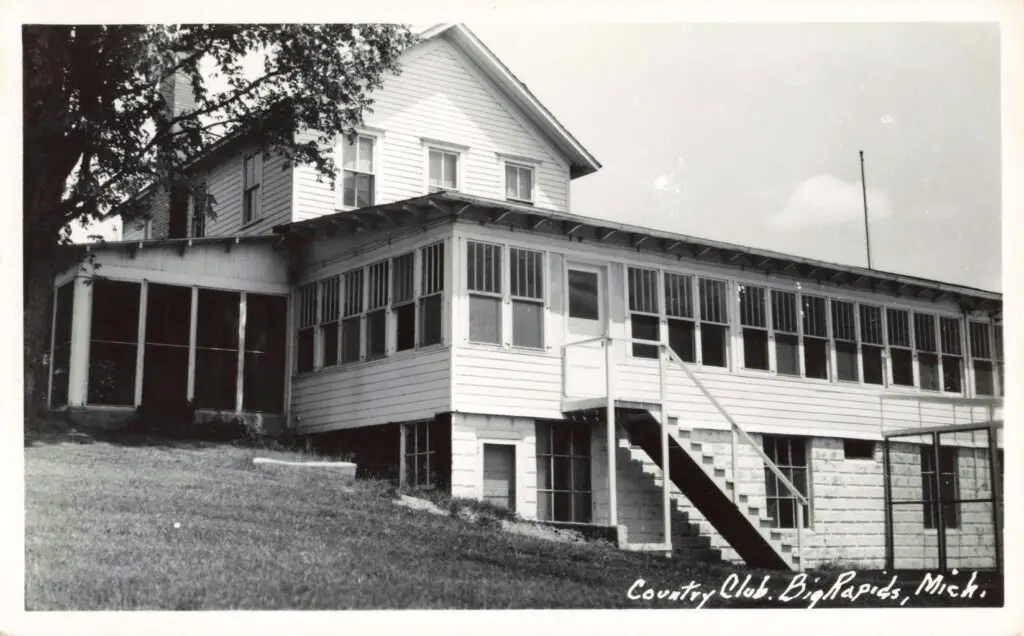
The city also had a lively social scene, in part due to the Ferris Institute. The college hosted public lectures, plays, and musical performances that townsfolk could attend. Ferris students and faculty participated in local churches and civic organizations. Additionally, Big Rapids had a Country Club (pictured in historical photos as a large white clubhouse) where middle-class residents gathered for dinners, dances, and golf on a miniature course.
Such venues provided relaxation and opportunities for social networking among local business owners, professors, and their families. Despite the economic hardships of the 1930s, community spirit in Big Rapids was strong. Neighbors often helped each other, and local charities, sometimes led by Ferris staff or students, provided relief to those in need. The presence of the college and its youthful energy blended with the steady, practical character of the town’s older generations.
Big Rapids by 1950 – A College Town Emerges
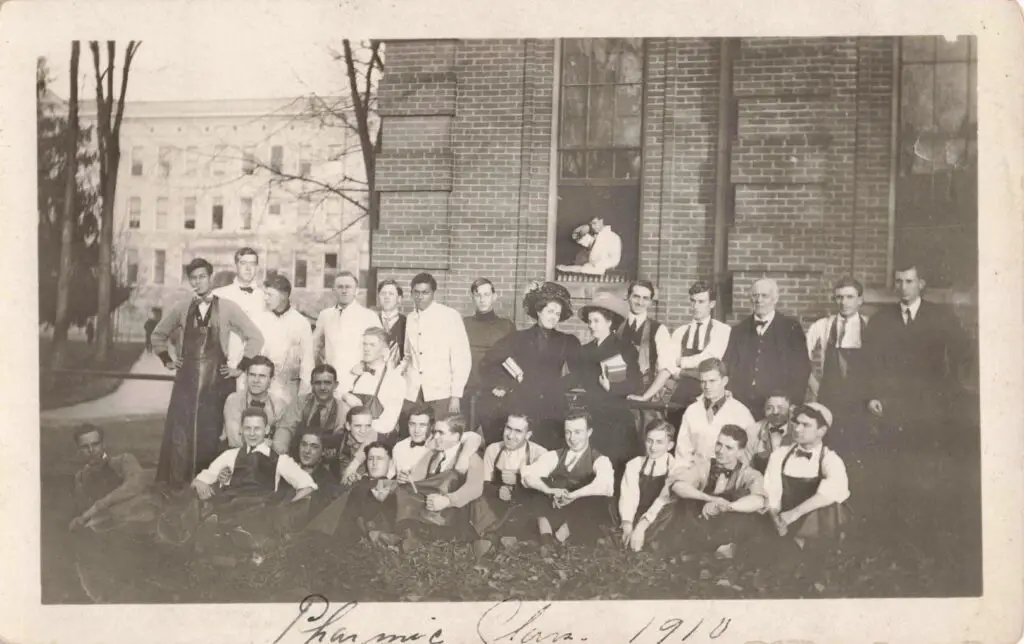
By 1950, Big Rapids had fully transitioned into what we would recognize today as a college town. The history of Big Rapids, Michigan, in the first half of the 20th century was primarily defined by Ferris Institute’s influence. Enrollment at the school surged after World War II, boosted by returning veterans who utilized the G.I. Bill to pursue an education. Ferris Institute (which was still a private institution at this time) expanded its curriculum and erected a few new facilities. However, many classes still took place in Old Main and a handful of adjacent buildings.
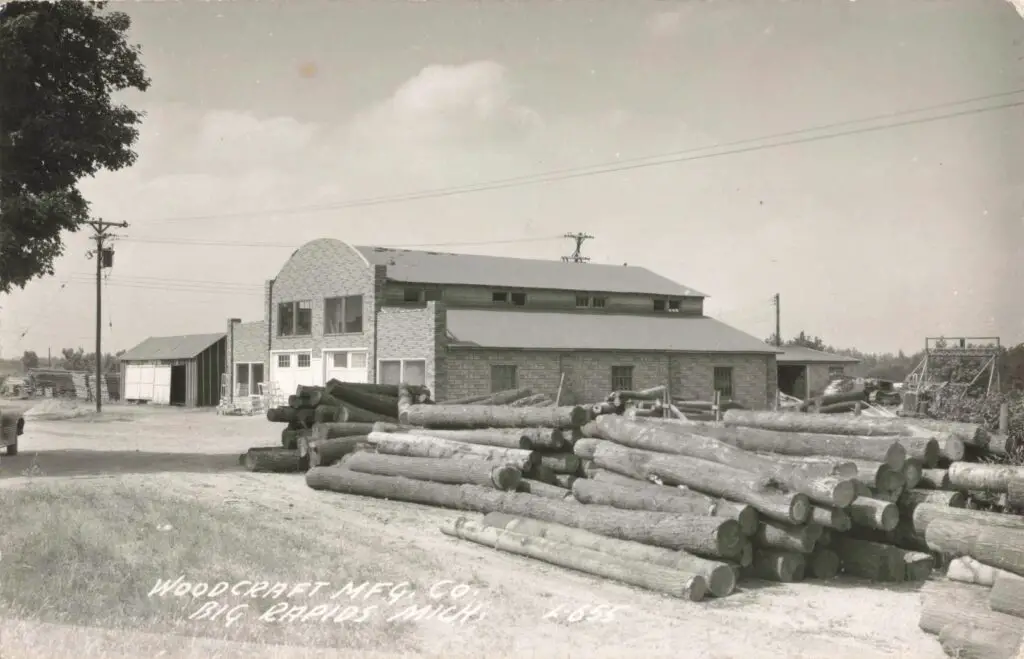
The local economy, while modest, was stable. Some smaller manufacturing businesses persisted – for example, the Woodcraft Manufacturing Company in Big Rapids produced wood products and provided jobs in the 1940s (one historic photo shows its facility with piles of logs ready for milling). Small tool-and-die shops and service industries also employed residents. And importantly, Ferris Institute itself provided many jobs, from professors and administrators to maintenance workers. The school had truly become the town’s lifeblood.
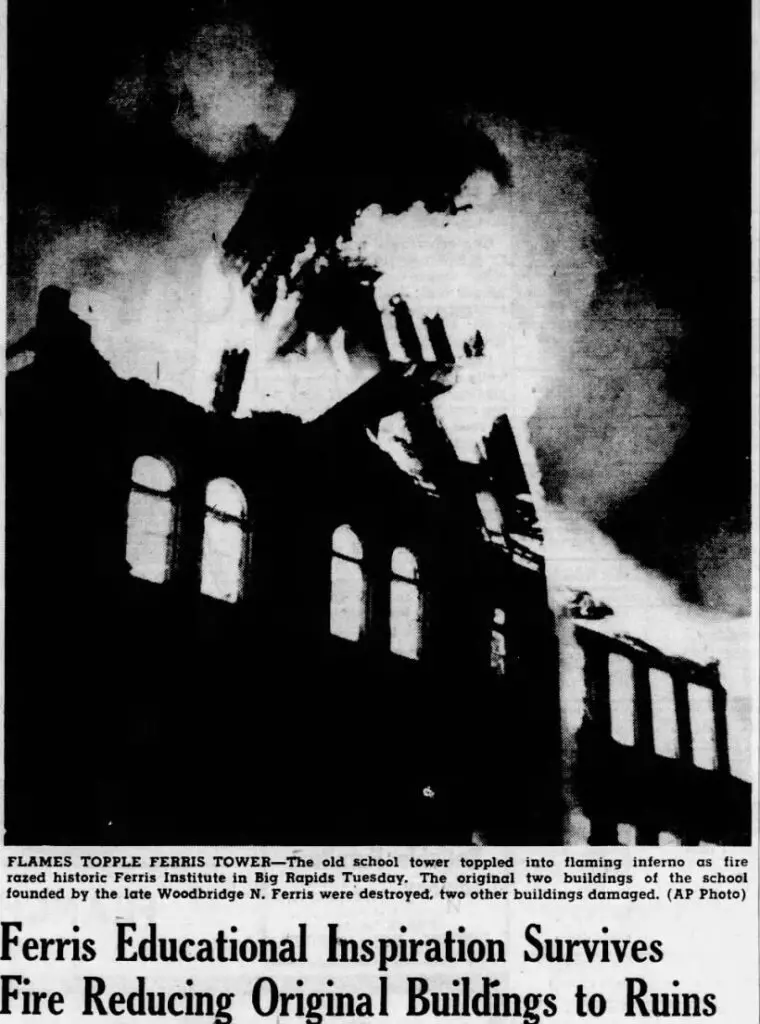
An event in February 1950 underscored just how integral Ferris Institute was to Big Rapids. On a cold night, a catastrophic fire broke out on campus. It destroyed the iconic Old Main building and several others, gutting roughly two-thirds of the campus. The loss was emotionally devastating for the community – Old Main had been a symbol of Big Rapids for over 50 years. But the aftermath demonstrated the town’s resilience and unity. City leaders, alumni, and ordinary citizens lobbied the state government in Lansing for help.
That summer, their efforts succeeded: Ferris Institute was brought under Michigan state ownership and turned into a public college (initially called Ferris State College). State funds helped rebuild the campus almost immediately. Classrooms were temporarily set up in any available space, allowing students to continue their education. The quick rebound from the 1950 fire showed how deeply Big Rapids residents valued the institution. It was clear that the identities of Big Rapids and Ferris were inseparable by this point.
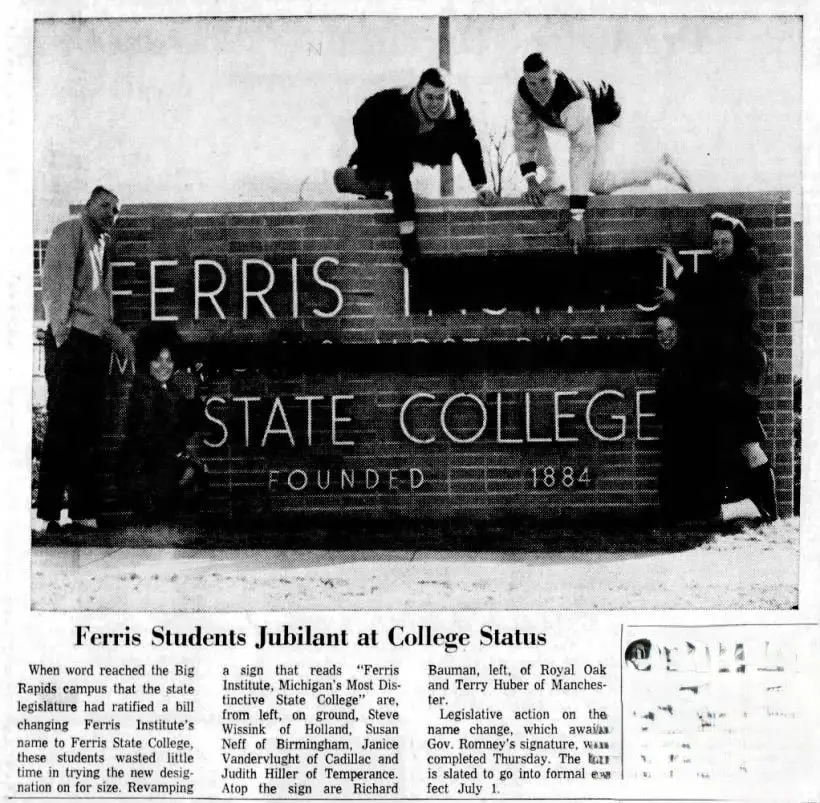
In 1950, Ferris officially joined the state higher education system, marking the beginning of a new chapter (eventually it would become Ferris State University). But even by then, the groundwork of a lasting community had been laid. Big Rapids had grown from a one-resource town into a diversified small city known for its educational opportunities, civic innovation, and close-knit culture.
The population in 1950 was still only around 6,000–7,000 people – similar to the lumber era – but now those people had a far different livelihood and outlook than the rough loggers of 1880. They were students, teachers, merchants, factory workers, and public servants, all of whom contributed to a balanced local economy.
Final Thought on the History of Big Rapids Michigan
The history of Big Rapids, Michigan, between 1880 and 1950 demonstrates how a community can adapt and persevere through economic shifts—from the frenzy of the lumber boom to the promise of Ferris Institute, Big Rapids continually reinvented itself. Key to this transformation was the foresight of individuals like Woodbridge Ferris and the collective spirit of the townspeople who embraced change. The legacy of those early decisions is still evident today – Big Rapids remains home to Ferris State University and is celebrated for its mix of small-town charm and educational prominence. The sawmills and logging camps are long gone, but the city’s story of resilience and renewal continues to inspire those who look back at its remarkable journey.
